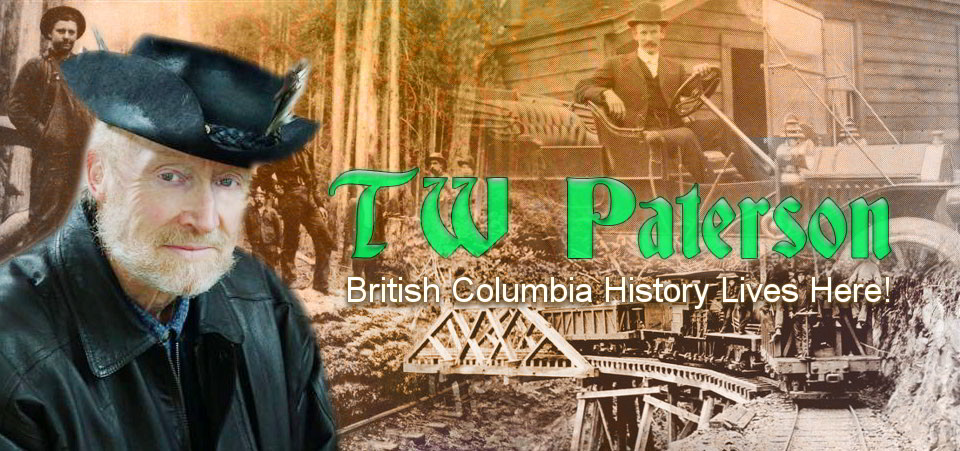Ernest C. Manning: British Columbia’s chief forester, ‘Father of Conservation’
A coincidence awaits you should you research onetime British Columbia chief forester Ernest C. Manning, for whom Manning Provincial Park is named.
The coincidence is that he used his middle initial for Callaway so if you Google Ernest C. Manning, you’ll find that site is dominated by the late Alberta premier of the same name and initial, and no relation. For the man of our quest there are but two sites, both of which require paid access.
Let’s stick with B.C.’s Mr. Manning, 1890-1941, who’s regarded as the Father of B.C. Conservation.
If conservation sounds like a contradiction for a forester, read on.
After graduating from the University of Toronto he worked for the CPR’s land resource department, covering much of the East Kootenay region in all kinds of weather as a timber cruiser until he joined the Dominion Forest Service in 1915 and the B.C. Forest Service in 1918.
Within five years he was in charge of the Victoria office and, two years later, he was made Assistant Chief Forester. In 1935 he became Chief Forester in charge of departmental policy, the equivalent of today’s deputy minister. Out of step with many of his colleagues of the day, he’d already recognized that the rapid pace of logging in B.C.’s forests was unsustainable and he began working towards fire protection, conservation, reforestation and natural regeneration, and a sustained yield basis.
He also recognized the need for public education and the creation of more parks which, as of 1939, came under his department’s mandate. Among his achievements of this period was preservation of some of Vancouver’s North Shore mountains for skiing.
To carry the message to the public, he enrolled in a Dale Carnegie speaking course and embarked upon a major program of speaking engagements. Always with the same message: That forestry was B.C.’s most important industry, that nine-tenths of all productive forests lands (in those days) were owned by the Crown (i.e. the taxpayers) but they were being badly mismanaged.
Long before global warming became an issue, he reminded his listeners that trees protected streams and fisheries, that, on a financial level, forest resources “are splendid investments for our sinking funds. They will pay dividends in good years and bad years. There will be no failures if proper business principles are used in their management. Keep the assets in a productive state and do not dissipate the capital.”
All of this was, need it be said, during the depth of the Great Depression when the politicians’ mantra was (as ever) jobs, jobs, jobs. Meaning that short-term production and employment almost always outweighed sustainable forest practices however sensible they may be.
In 1991 daughter Helen Manning Akrigg wrote that he’d needed patience, tact, a broad knowledge of B.C. forestry practices, excellent judgment and a “marked ability to handle men”.
It took mid-Vancouver Island’s so-called Great Fire of 1938 and the loss of more than 75,000 acres of prime timber–after all his repeated warnings against the way slash burning was conducted–to prompt the government to increase Manning’s department’s appropriations.
Not without reluctance and bitterness, however, an exasperated Premier Duff Pattulo accusing his Chief Forester of using “propaganda” to get increased funding. Although the public had largely accepted Manning’s portrayal of the state of affairs in the woods, the politicians weren’t listening and his last report to the Legislature, in November 1939, was bare-knuckled.
Entitled, “Wasting Our Heritage,” his report accused the industry, with government sanction, of “impoverish[ing] our children” by squandering Nature’s resources. B.C. needed to grow its forests and to diversify by developing more parks, promoting the sport of skiing (as a tourist draw) and providing more accessible camping grounds.
But even Manning had to put his crusade on hold for the war when he was asked by H.R. MacMillan to assume the position of Assistant Timber Controller for British Columbia.
Sadly, while returning home from business in Ottawa, he was killed in the crash of his aircraft in northern Ontario. He was just 50 years old.
The Vancouver Sun lauded Manning as “one of British Columbia’s greatest public servants. There was no man to whom the people of this province owed a greater debt for self-sacrificing service than to Ernest C. Manning. His job was chief forester for this province. It was indeed his mission in life. He was our ablest exponent of outdoors beauty and outdoors wealth…
“The safe establishment and perpetuation of our timber resources was the chief end and ambition of his career. No civil servant in this part of the world ever gave himself more completely to his job, or more intelligently.”
The government of the day moved quickly to acknowledge Manning’s great contributions by dedicating E.C. Manning Provincial Park, expanded from the original Three Brothers Preserve which had been established in 1931 to save the alpine meadows from overgrazing by sheep, as a Class A park. A provincial jewel in the Cascade Mountains, it’s within three hours’ drive of Vancouver and the Okanagan since the building of the Hope-Princeton Highway in 1949.
The bronze plaque for Ernest C. Manning Park reads: “This park, established June 17, 1941, perpetuates the memory of ERNEST C. MANNING. His services to British Columbia were outstanding and he was ever an enthusiast for the development of forest areas for recreational use. Born at Selwyn, Ontario, April 17, 1890, he entered the British Columbia Forest Service in 1918. He was Chief Forester from January 1, 1936 until his untimely death on February 6, 1941.
“‘There’s life alone in duty done
And rest alone in striving.’”
See Also: British Columbia’s Second Largest Fir…

Thank you, Alieda. Readers take note. E.C. Manning was a remarkable man and it pleases me to acknowledge his pioneering contributions to what we now term ‘the environment.’ –TW